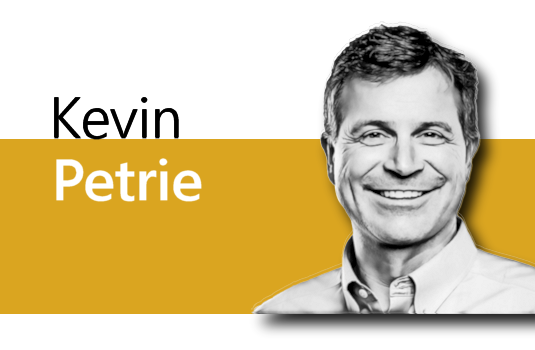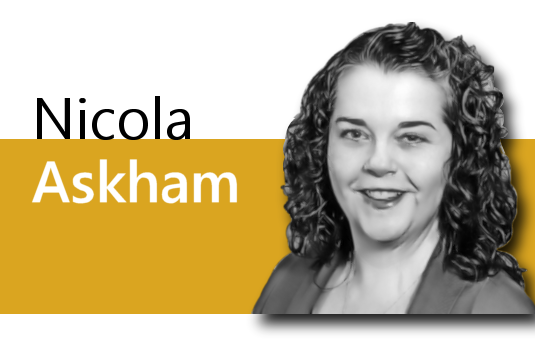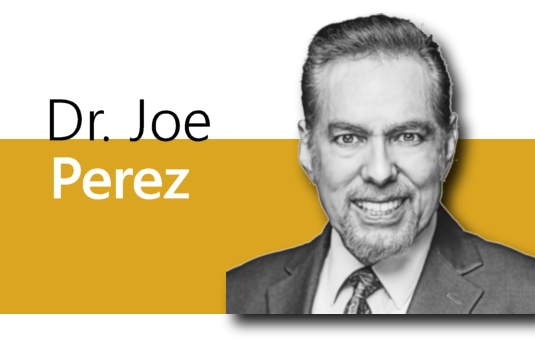
Why My Unlikely Journey Now Makes Perfect Sense
I haven’t written an article in a while, mainly due to my suspicions that the LinkedIn algorithm hijacked postal virality! 😊
I also don’t write much about myself, but I was inspired to write this post by Jane Smith of ThoughtSpot. Thank you for your thought process and for the nudge.
This post is a reflection on where I am today and where I have come from. When I describe my past, I always tell people I’ve not had a linear career, one that doesn’t tread the same boards towards a specific career path. My life has been a series of twists and turns that have taken me around the globe, working with some incredible people, companies and many if not all, industries.
The Academic Spark That Lit the Fuse
After my degree which was in Business Information Technology or BIT as we used to call it, a hybrid discipline that spanned management disciplines, strategy, systems thinking, programming, systems design (SSADM), business analysis, understanding databases through the teachings of E.F. Codd and much more! My final thesis was titled “The Application of Information Warfare Strategies to Business Planning. It was the time when Information Warfare was just coming into vogue, what we now call Cyber Warfare, and it fascinated me then in 1996 how information/data could be weaponized.
But there is something fascinating about how hindsight gives shape to your story, looking back and thinking about my journey, a pattern that I couldn’t see at the time, but suddenly it all makes sense in the light of what’s happening now.
The Foundation: ERP, Structure, and the People Element
Fresh out of university, I started my career in the ERP world, as a Business Analyst in the Aerospace & Defense industry. It was process-heavy, documentation-laden work, and people focused. At the time it was my first graduate position, and I had to put my programming skills into use with COBOL, AS400/RPG and Unix. I didn’t like it much, but at the same time, it drilled into me the discipline of structure, and understanding how a business runs beneath the surface, how areas such as finance, procurement, inventory, supply chain all came together.
I managed to move across from the programming area to the analysis/process part as I wanted to be involved in the front office so to speak and was given an important role to be the lead trainer across Europe, which was a bit daunting as only a year into my graduate position, it was a big task. But, moving through these disciplines gave me a deeper understanding of the “people” element in the people, process, technology triangle. As well as this it taught me patience, because nothing in ERP moves fast.
The Shift to Commercial Impact
After that roller coaster ride which ended up living in Paris for 2 years, I needed a change and shifted into another Business Analyst role. Submerged into a faster-moving, more commercially focused role, I was one of two analysts in a business transformation team. Our business transformation efforts focused on cost reduction, service redesign, the hard-edged stuff, focused on outcomes. Yes, of course there was the usual process work, requirements gathering, but just one of the questions for us posed by the CEO was “How can we reduce the time it takes from taking a picture of an object to printing an entire catalogue with all the various inputs and save money?”
So, now I was being asked to look at efficiencies through the lens of hard core savings. That year I learnt a lot about new colour techniques and new printing techniques, and cost-benefit. We saved about £1.5m, which I think was a real hit! Taking the process from 19 days down to 4!
From there, the CEO then asked what we could do with our Customer Data. What? So, the shift that then occurred was into CRM, another world entirely. Again, more commercially focused, and closer to the customer. So, throwing myself into the world of CRM was new and fresh, my colleague and I ran the RFP process, selected a vendor and then started to work on the processes etc.
It was then that I started to see the gaps between how the company structured itself operationally, and how they engaged with their market. It was the first time I really began to connect the dots between systems, people, and purpose. It was also when I first started to take notice of data, as at that time in 2002, data wasn’t the topic of every conversation, in fact no one really talked about it! But the CEO I was working with was quite a visionary, even if most people called him boring!
Lists, Insight & the Spark of Analytics
More twists and turns. While still working on the CRM program, I was asked to run the central insight function, known as the CMS team, a central team that managed customer data and provided lists of clients for inputs into meetings. All data taken from AS400s! Ha! I’d come full circle! But this time, I had to get my head around the issues of CRM applications, such as data quality, GIGO, people not willing to divulge information about their clients and the secrecy of it all! A real mess! But, as I started to get into the analytical side, where we had data, we were able to use it for better targeting and more effective marketing campaigns. Fun stuff!
Moving from providing lists to operating at the business level was what the insight team needed! A rebrand, a new life and purpose. So, this was data, and I had caught the bug! After spending 3 years in New York, I decided a change was necessary.
I could write a book about my experiences, so, I might condense the next parts, otherwise this could be a very long article!
Consulting, Government, and the Art of Influence
I then continued working in the CRM space, moving to a new company, a large management consultancy and worked on a major UK government change program, which was big, messy and a politically complex environment. 9 months spent implementing a new CRM system, while downsizing operations, and delivering on time and within budget! That experience taught me how to influence without authority, how to move the dial through alignment, and how to frame problems in a way that got action. It also taught me that there wasn’t anything else to do in those 9 months but work my behind off and the adage of “work hard and play hard” was certainly one that was in overdrive!
Post my experiences at the management consultancy, where I also ran the bid teams for all UK government bidding, which was a very new process for me and again all about data and information. But I needed a new and fresh challenge and guess what I decided to take my experiences in government and took an independent role working on one of the largest transformation programs for the government of the Republic of Trinidad and Tobago! I moved to the T&T for two years, melting in the heat and working across public sector transformation initiatives that spanned ministry wide transformation (vertical) and holistic transformation (horizontally) across government. I had to use all the skills I had acquired from process, tech, data, people, systems thinking, systems design, organizational design, stakeholder management etc. etc.
Building Data Functions and Creating datazuum
After that I was asked to help build the data and analytics function for a US company in the UK. Which was awesome and daunting! People call it imposter syndrome, and I think at that time I had a lot of it! What had I gotten myself into! But I threw myself into it, was lucky to be mentored and built a team, built propositions, worked with the sales team to educate them on D&A, went along to pitches which was a first as they would normally keep techies away from the client! Steep learning curve and all that! I also did more and more strategy work here, as clients were still not too sure what data was, and this is 2010! So, my strategy hat became increasingly useful, delving into established frameworks, driving out new commercial propositions based on value etc.
I had a great time learning and making money for the company, which was eventually split up and sold! That is when I packaged all my knowledge together and created datazuum. A vehicle to start working with companies that needed to think differently about data and analytics, not from a shiny new object perspective, but from a value-based one. Starting out as an independent contractor and then meeting people along the way to create something more meaningful.
Why It All Makes Sense Now
At the time and on reflection it felt like I was zig-zagging across domains. ERP, CRM, business transformation, consulting, data and analytics. But now, with AI taking center stage, I realize that what I’ve really been doing all along is learning how to operationalize value from complexity.
And that’s exactly the skillset organizations need today.
Why Does My Journey Matter?
It doesn’t as I’m sure I’m not the only one who has had a career that is shaped in this way. On reflection and my journey is informing me of what’s coming or what is already here. Let’s be honest, there is a shift happening in data teams. Not loud, not headline-grabbing, but significant. From being a business analyst, to data analysis, to building products, times are changing and as a bit of advice, if I can offer that to those coming up the ranks now, the narrative would probably be this.
The traditional data analyst, the one tasked with pulling numbers, building dashboards, and answering requests, is being quietly displaced. Not fired, not made redundant, but in my opinion bypassed.
By what?
By AI, by low-code platforms, and increasingly, by business users who no longer want to wait in line for insight.
At the same time, the traditional business analyst, where I played the played the role of translator between tech and the business, is also being squeezed. Because translation alone isn’t enough anymore. Organizations need people who can challenge, shape, architect and execute, not just facilitate.
So, what’s emerging instead? I talked about this in a recent post, and I believe a new kind of operator: the Techno-Commercial Hybrid
What That Really Means
Over the years, I’ve been called many things: analyst, consultant, strategist, advisor. But in today’s terms, what I’ve really become is a techno-commercial hybrid. Someone who can:
- Understand data and architecture, but speak in business terms
- Build a use case that makes commercial sense, not just technical elegance
- Translate boardroom intent into delivery roadmaps the teams can actually execute
- Spot the difference between value theatre and actual value creation
This isn’t about being hands-on with every tool. It’s about knowing what needs to happen, and why, then building the right environment for delivery to thrive.
As AI becomes more embedded across the enterprise, this hybrid skillset becomes critical. Not just for execution, but for governance, alignment, and risk management.
Why My Journey Now Makes Sense (And Maybe Yours Does Too)
- ERP gave me operational fluency – I know how a business really runs, from the inside out.
- CRM made me customer-focused – It taught me that the user journey matters just as much as the backend system.
- Transformation gave me commercial edge – It sharpened my sense for where cost, process, and value intersect.
- Data and analytics gave me influence – Not just in tools and dashboards, but in the way decisions get made.
- And strategy gave me reach – Into the boardroom, into M&A conversations, and into the future of how organizations work.
In the AI era, where everyone’s scrambling to prove they’re “AI ready,” I’ve realized I’ve been preparing for this moment for over two decades, not by learning every new tech trend, but by learning how to pull business, technology, and people into alignment.
That’s the skillset organizations need now. And in my view, it’s still in short supply. I didn’t set out to build a career for the AI era. But with hindsight, it seems I was preparing for it all along.
What I’d Say to You If You’re on This Path
If you’re working in data, transformation, or tech today, here’s my take:
- Don’t just upgrade your tools, upgrade your thinking: If all you know is how to build a dashboard, you’ll be replaced by someone who knows how to use one to drive action.
- Connect value to action: Learn to speak the language of the CFO, the COO, the CEO. Don’t just show them the data. Show them what they can do with it.
- Straddle both worlds: It’s not enough to sit in a tech or data silo or hide in strategy. You must walk both corridors and be credible in each.
- Be the architect of use cases, not just the executor of tasks: Those who can frame the right question will always be more valuable than those who just answer it.
Final Thoughts
AI won’t kill existing roles, but it will kill the version of those roles that stay within their safe space.
Likewise, AI won’t replace strategic thinking, but it will expose the lack of it, fast.
The organizations that will succeed in this next chapter will be those that invest in people who can see across domains, operate across layers, and still deliver at speed.
I didn’t set out to build a career for the AI era. But looking back ERP, CRM, transformation, consulting, strategy, D&A, well it turns out that might have been the best preparation I could have had.
Thanks for reading.

 - by
- by




